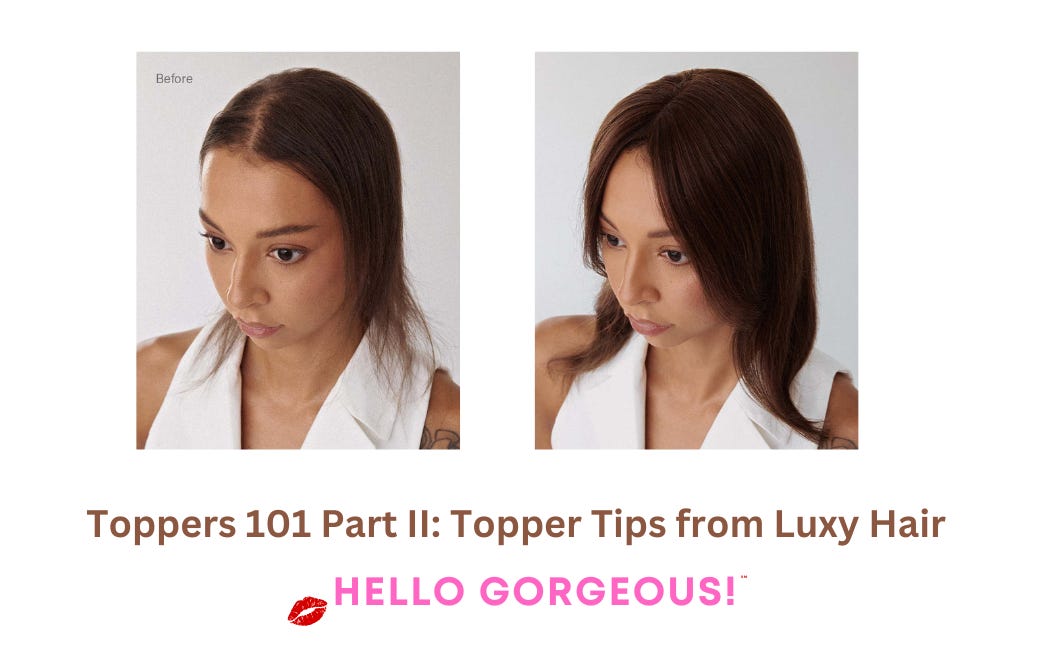Toppers 101: Part Two of Three
Gillian Fetters, Executive Director of Marketing at Luxy Hair, explains toppers and why they're so popular
Hello Gorgeous!
August is Hair Loss Awareness Month and it’s a topic that hits hard for many women over the age of 40. One of the questions I’m frequently asked is to explain toppers — clip in hair alternatives to wigs or hair extensions.
I’ve gotten so many questions on the topic that I’m doing an ongoing series. Here’s the intro to that series if you want to catch up.

Gillian Fetters, the Executive Director of Marketing at Luxy Hair spills all on toppers
Clip-in hair extension brand Luxy Hair recently launched hair toppers (The grand dame of aging gracefully, Andie MacDowell, was spotted wearing their hair extensions if a gorgeous shade of grey). Luxy Hair toppers are on the affordable side, at a few hundred dollars for a clip in hair piece made of beautiful Remy hair (all will be explained below).
In the intro to my series on toppers, I mentioned that Luxy Hair sent me a chocolate brown human hair topper to t…
Keep reading with a 7-day free trial
Subscribe to Hello Gorgeous! Beauty + Life to keep reading this post and get 7 days of free access to the full post archives.




